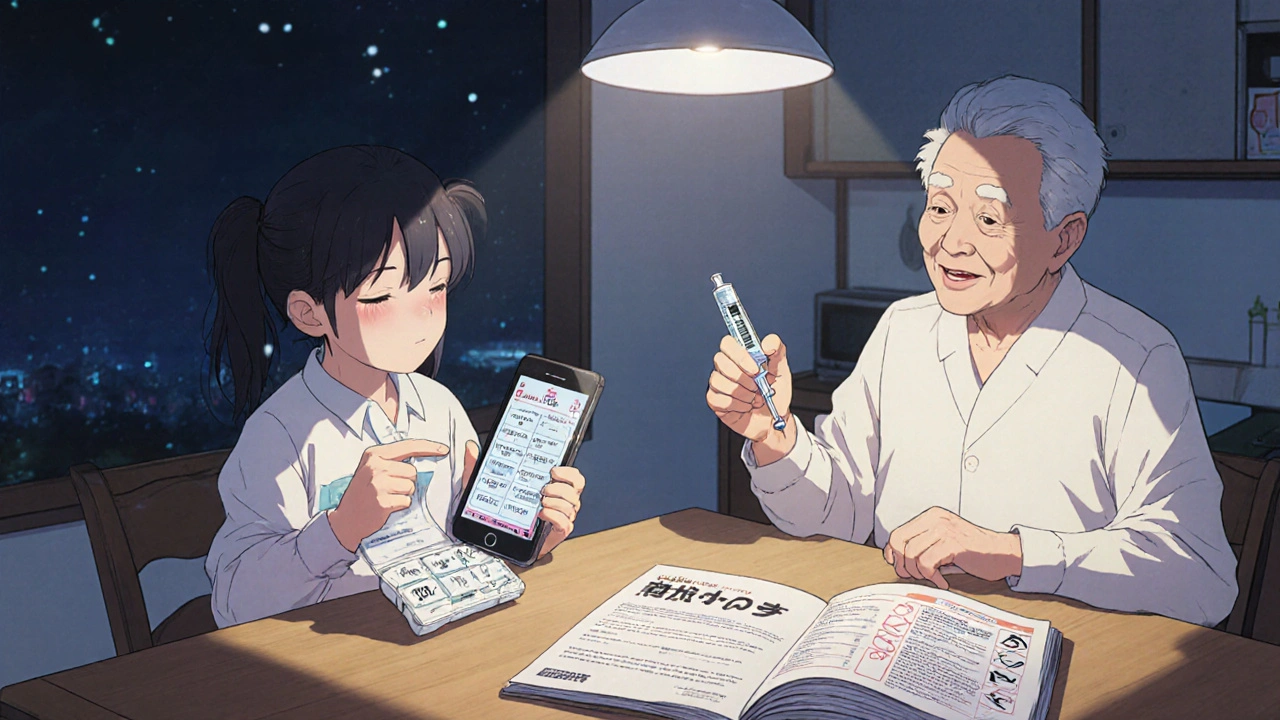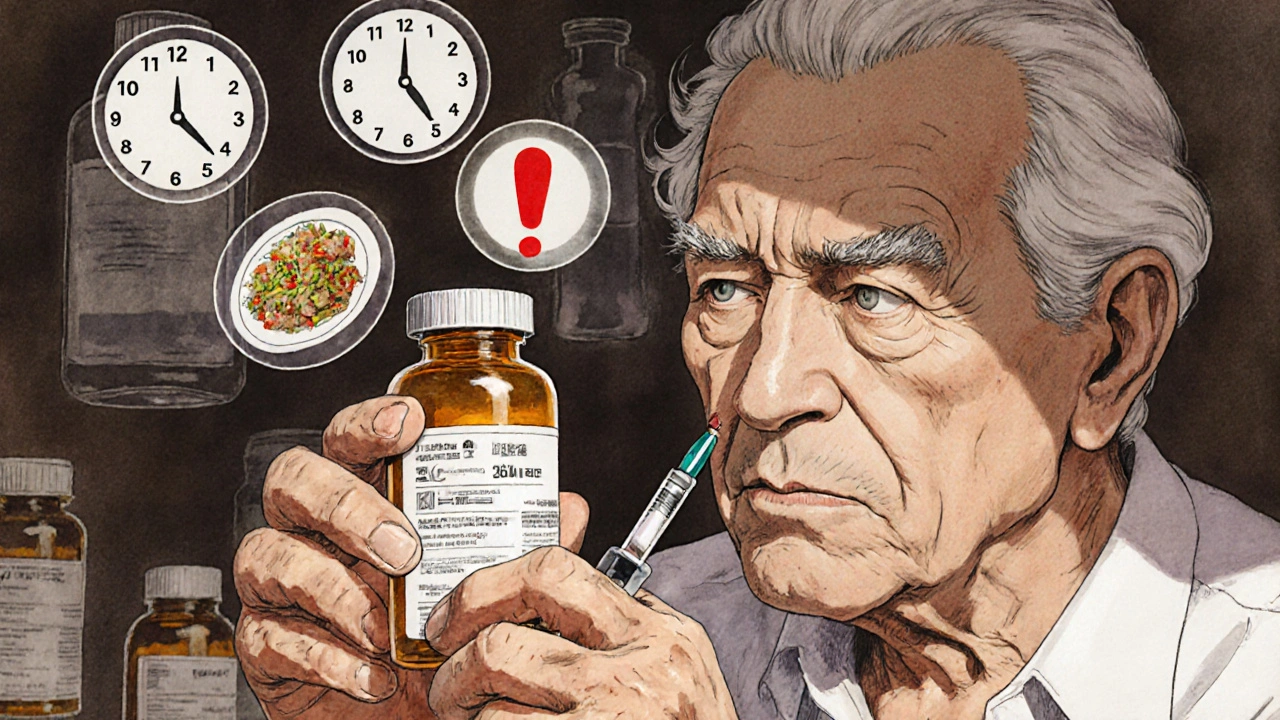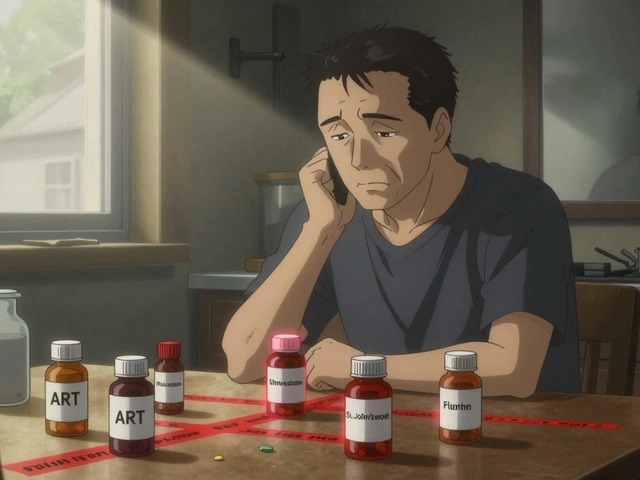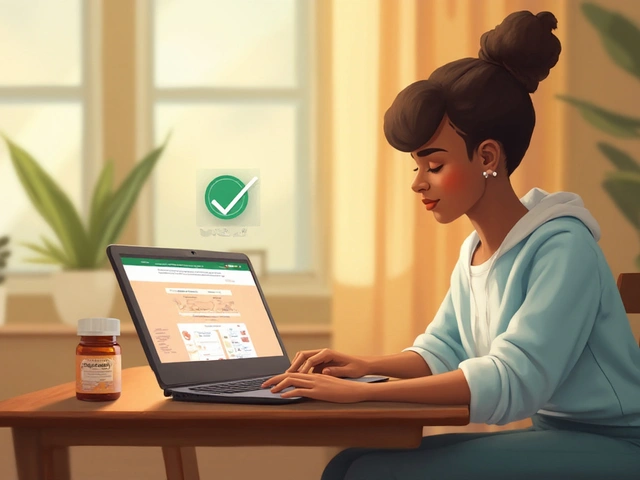Medication Dosing Schedule Generator
Create Your Medication Schedule
Understand what your label really means. This tool converts common dosing terms into a clear schedule with times, visual aids, and plain language explanations.
Your Medication Schedule
Remember: Always take your medication with the correct instructions. For example, "take with food" means during or right after eating. If you're unsure, ask your pharmacist.
Every year, over 1.3 million medication errors happen in the U.S. - not because pills are wrong, but because people don’t understand what they’re supposed to do with them. You might think reading a label is simple: "Take one tablet twice a day." But for millions of Americans, that’s not enough. Words like "every 12 hours," "as needed," or "with food" can mean totally different things depending on how you interpret them. And when you’re tired, stressed, or managing five different meds, confusion becomes dangerous.
Why Medication Labels Are Hard to Understand
Most prescription labels are written at a 10th-grade reading level. The average American reads at a 6th- to 8th-grade level. That gap isn’t just small - it’s deadly. A 2009 study found that even when labels used clearer language, patients with low health literacy were still 2.3 times more likely to mess up their dosing. Why? Because it’s not just about reading. It’s about math, timing, and context. Think about this: "Take 5 mL twice daily." Does that mean 5 mL total, or 5 mL each time? One parent in a CDC focus group thought it meant the first dose was 5 mL and the second was the rest of the bottle. Another patient confused "mg" (milligrams) with "mL" (milliliters) - and ended up taking 10 times the right dose. These aren’t rare mistakes. They happen every day in homes across the country. Even simple terms cause trouble. "Take with food" - does that mean before, during, or after? "Take every 4 to 6 hours" - does that mean you can take it four times in a day, or six? One pharmacist on Reddit said the most common error they see? Patients doubling their dose because they think "take twice daily" and "take every 12 hours" mean the same thing. They don’t.What Works: Clear Labels and Visual Help
The good news? Simple changes make a huge difference. A 2013 study showed that when labels switched from "twice daily" to "Take 1 tablet in the morning and 1 tablet in the evening," the number of people who took too much in 24 hours dropped by 32%. That’s not magic. That’s clarity. One of the most effective tools is the Universal Medication Schedule (UMS). Instead of "twice daily," it uses four simple times: morning, noon, evening, bedtime. Wisconsin Health Literacy found that when clinics adopted UMS, dosing confusion among older adults taking multiple meds dropped by 47%. One 72-year-old patient said, "I finally understood when to take my pills after they switched to morning/noon/evening/bedtime labels. I didn’t have to guess anymore." Visuals help too. Pictograms - simple icons showing a person swallowing a pill, a clock, or a meal - increased correct understanding by 28% among people with low literacy. The U.S. Pharmacopeia now requires these on all prescription labels by May 2025. Why? Because a picture of a clock with "12" and "6" is easier to understand than "every 12 hours."How to Read a Label Like a Pro
You don’t need a medical degree to get this right. Here’s what to look for on every bottle:- Active ingredient: What’s actually in the pill? If it’s not listed clearly on the front, ask for a printed sheet.
- Dose: Is it "5 mg" or "5 mL"? Don’t assume. Write it down.
- Frequency: "Twice daily" = morning and evening. "Every 6 hours" = four times a day. They’re not the same.
- Instructions: "Take with food" usually means during or right after eating. "Take on an empty stomach" means at least 1 hour before or 2 hours after food.
- Expiration date: Old medicine can lose strength or become unsafe. Toss it if it’s past the date.
Teach-Back: The Secret Weapon for Families
If you’re giving meds to a child, an elderly parent, or someone with memory issues, use the teach-back method. After the pharmacist or doctor explains, ask them to show you how they’d do it. "Can you tell me when you’ll take this?" or "Show me how you’d measure this liquid." A 2023 trial at Children’s Hospital of Philadelphia found that caregivers who used teach-back had 34% fewer dosing errors and scored 22% higher on medication knowledge tests. It only takes 1 to 2 extra minutes per medication. But it stops mistakes before they happen. Don’t be shy about asking: "Can you explain this to me like I’m 12?" or "I want to make sure I got this right - can you repeat it?" Good providers won’t mind. They’ve seen what happens when people don’t understand.What’s Changing in 2025
New rules are coming. By May 2025, all prescription labels in the U.S. must follow the USP General Chapter <17> standards. That means:- One-column layout (no cluttered sidebars)
- Font size at least 12-point
- Clear separation between drug name, dose, and instructions
- Standardized pictograms for common actions (take, avoid alcohol, etc.)

What You Can Do Today
You don’t need to wait for new rules. Start now:- Keep a written list of every medication you take - name, dose, time, reason. Update it every time your doctor changes something.
- Use a pill organizer with morning/noon/evening/bedtime slots. Label it clearly.
- Ask your pharmacist for a printed version of the instructions - even if you have the label on the bottle.
- Use your phone to take a picture of the label and send it to a family member. "Does this make sense to you?"
- If you’re unsure, call your pharmacy. Pharmacists are trained to explain this stuff. No judgment.
It’s Not Just About Reading - It’s About Safety
Health literacy isn’t about being smart or educated. It’s about design. It’s about whether the system works for you - not just the people who can read quickly or understand medical jargon. The truth is, no one should have to be a detective just to take their medicine safely. Every time you take the right dose at the right time, you’re not just healing. You’re preventing hospital visits, emergency trips, and worse. And every time you help someone else understand their label, you’re saving more than a pill - you’re saving time, stress, and maybe even a life.Start today. Look at your next bottle. Read the words. Ask the question. Make sure.
What does "take twice daily" really mean?
"Take twice daily" means two doses per day - usually one in the morning and one in the evening, about 12 hours apart. It does NOT mean you can take it whenever you remember. Taking both doses at once can be dangerous. Always confirm the timing with your pharmacist. Many health systems now use "morning and evening" instead of "twice daily" to avoid confusion.
Is "every 6 hours" the same as "four times a day"?
Yes. If you take a medication every 6 hours, you’ll take it four times in 24 hours: for example, 8 a.m., 2 p.m., 8 p.m., and 2 a.m. This is different from "three times daily," which usually means spaced evenly during waking hours (e.g., 8 a.m., 2 p.m., 8 p.m.). Always check with your provider - some meds must be taken at night even if you’re sleeping.
Why do some labels say "take with food" and others say "take on an empty stomach"?
Some medications work better when food is in your stomach - it helps your body absorb them or reduces stomach upset. Others need an empty stomach so food doesn’t block absorption. "With food" means during or right after a meal. "On an empty stomach" means at least 1 hour before or 2 hours after eating. If you’re unsure, ask your pharmacist for a simple rule: "Should I take this before, during, or after breakfast?"
Can I trust the dosing cup that comes with liquid medicine?
Not always. Many dosing cups have inaccurate markings. The CDC recommends using a proper oral syringe or dosing spoon marked in milliliters (mL). Never use kitchen spoons - a teaspoon can hold anywhere from 3 to 7 mL. If your medicine comes with a syringe, use it. If not, ask your pharmacy for one. They’re free and more accurate.
What should I do if I can’t read the label?
Don’t guess. Call your pharmacy. Ask for a large-print version or a voice recording. Many pharmacies now offer audio labels or smartphone apps that read the instructions aloud. You can also ask a family member, friend, or community health worker to help. Your safety matters more than pride. There’s no shame in asking for help.
Are there free tools to help me understand my meds?
Yes. The CDC’s Health Literacy website offers free printable guides on reading labels. The American Pharmacists Association has a "Medication Safety Checklist" you can download. Many hospitals and community centers offer free health literacy workshops - ask your local library or clinic. You can also use apps like Medisafe or MyTherapy, which send reminders and explain dosing in plain language.





Marjorie Antoniou
November 19, 2025 AT 15:15Finally, someone says this out loud. I’ve been telling my mom for years to stop guessing when she takes her pills. She thought 'twice daily' meant 'when I remember.' Now she uses a pill organizer with morning/noon/evening/bedtime labels. She hasn’t missed a dose in six months. Simple changes save lives.
Pharmacists aren’t just there to hand out bottles-they’re your best ally. Ask them to write it down. Ask them to draw it. Don’t be embarrassed. Your life isn’t a quiz.
Steve and Charlie Maidment
November 19, 2025 AT 18:10I mean, sure, the article’s nice and all-lots of pretty stats, big bold numbers, the whole nine yards. But let’s be real: most people don’t care. They’re tired. They’re overwhelmed. They’ve got five kids, two jobs, and a dog that barks at the mailman. You think they’re gonna sit there and read a 12-point font label like it’s a college textbook? Nah.
The real problem isn’t literacy-it’s systemic neglect. We’ve turned healthcare into a puzzle game where the rules change every time you walk in the door. And then we blame the patient when they lose. I’ve seen grandmas on fixed incomes skip doses because they couldn’t afford to refill. No amount of pictograms fixes that.
So yeah, good job with the UMS. But until we fix the cost, the access, and the arrogance of the system, this is just decoration on a sinking ship.
Kara Binning
November 21, 2025 AT 08:08Oh, so now we’re blaming patients for not being able to read labels? Let me guess-the next thing you’ll say is that poor people should just learn to spell better. This country spends billions on military drones but can’t afford to print instructions in plain language? Shocking.
And don’t get me started on the ‘teach-back’ method. Like, oh, we’ll just make the elderly repeat it back like they’re in a classroom. Meanwhile, the same doctors who wrote that label in jargon won’t even look up from their phone when you ask them what ‘q6h’ means.
Stop pretending this is about literacy. It’s about power. And the people who write these labels? They don’t care if you live or die. As long as the pill gets sold.
Chuck Coffer
November 22, 2025 AT 03:07Wow. A whole article about reading labels. Did we forget that we live in a country where the average person thinks ‘mg’ and ‘mL’ are the same thing? And yet, somehow, we still let people drive cars.
At this point, I’m just waiting for the FDA to mandate that all prescriptions come with a TikTok video of a grandma saying, ‘Take this one when the sun comes up.’
Meanwhile, I’m over here using a syringe I got for free because I didn’t trust the cup. Because apparently, in 2025, we still need to be detectives to not overdose on Tylenol.
Andrew Baggley
November 22, 2025 AT 13:44This is the kind of post that makes me want to hug my pharmacist. Seriously. I used to think they were just there to hand out pills and say ‘Take as directed.’ Then I asked one to explain my blood pressure med in words I could understand-and she spent 15 minutes drawing clocks on a napkin.
Now I do the same with my dad. He’s 78, has three meds, and a memory like a sieve. We use a pill box, we take pictures of the labels, and we say it out loud: ‘Morning: blue pill. Evening: white pill. Don’t eat with the red one.’
It’s not rocket science. It’s just respect. And it costs nothing.
If you’re reading this and you’re helping someone else? Do it. Even if it’s just once. It matters more than you know.
Frank Dahlmeyer
November 23, 2025 AT 06:53Let me tell you about my auntie. She took her insulin at night because the label said ‘once daily’ and she thought that meant ‘when I go to bed.’ Turns out, it was supposed to be before breakfast. She ended up in the ER with a blood sugar of 38. No joke.
After that, her daughter sat down with her, got a free dosing syringe from the pharmacy, and drew little stick figures with clocks next to each pill. One for breakfast, one for dinner. No jargon. No ‘q12h.’ Just ‘when you eat.’
It’s not about education. It’s about design. And if your system can’t make a label clear enough for a 70-year-old with arthritis and bad eyesight, then the system is broken. Not the person.
And yes-I’ve started sending this article to every family member who’s ever said ‘I’m fine, I know what I’m doing.’ They don’t always listen. But sometimes, they do.
Codie Wagers
November 23, 2025 AT 12:20The fundamental flaw in all of this is the assumption that language can be standardized. Language is not a tool-it is a reflection of culture, cognition, and context. The notion that replacing ‘twice daily’ with ‘morning and evening’ somehow resolves epistemological dissonance is a reductive fantasy.
One cannot ‘simplify’ meaning without eroding nuance. ‘With food’ is not a directive-it is a physiological condition. To reduce it to a pictogram is to infantilize the human capacity for interpretation.
And yet, we continue to treat patients as defective machines that need firmware updates. The real crisis isn’t health literacy. It’s the collapse of trust between healer and healed. No label can fix that. Only presence can.
But I suppose a 12-point font is easier to mandate than empathy.
Angela Gutschwager
November 23, 2025 AT 19:30My grandma used to take her blood thinner at bedtime because she thought ‘once a day’ meant ‘when I go to sleep.’ She didn’t know it was supposed to be in the morning. She almost died. Now I print out the label, circle the time, and tape it to her fridge. No apps. No fancy stuff. Just pen and paper.
And yes-I use a syringe. Kitchen spoons are a myth. Don’t be that person.
seamus moginie
November 25, 2025 AT 13:44As a former nurse in Dublin, I’ve seen this too many times. The labels are written by lawyers, not doctors. The instructions are designed to cover liability, not to save lives. And yet, we act surprised when people mess up.
It’s not that Americans are dumb. It’s that the system is designed to fail them. I’ve seen patients in Ireland with no education take their meds perfectly because their community nurse sat with them for 20 minutes and drew a clock. No jargon. No apps. Just time, patience, and respect.
So stop talking about ‘health literacy’ like it’s a personal failing. It’s a policy failure. And until we fund community health workers to do what pharmacists used to do-talk to people-we’re just rearranging deck chairs on the Titanic.
James Ó Nuanáin
November 27, 2025 AT 01:44As a proud Brit who’s seen the NHS do this right for decades, I’m absolutely appalled by the state of American healthcare. In the UK, we don’t rely on ‘pictograms’-we rely on trained nurses and pharmacists who actually speak to patients. No one in Britain has to guess what ‘q6h’ means because their GP writes it in plain English.
And we don’t need 12-point fonts. We need more staff. More time. More humanity.
Meanwhile, in the US, you’ve got a system where a pill bottle costs more than a month’s worth of insulin. Of course people are confused. They’re not stupid-they’re being exploited.
👏👏👏 to the article for trying. But don’t mistake band-aids for surgery. We need systemic change. Not better labels. Better care.
Nick Lesieur
November 27, 2025 AT 18:35Ohhhhhh so now we’re gonna fix medication errors by putting little pictures on bottles? Next thing you know, they’ll put a cartoon of a guy taking a pill next to the expiration date.
Meanwhile, my cousin took 10 pills because the label said ‘take one every 6 hours’ and he thought that meant ‘take one when you wake up, then another when you’re done with your first coffee.’
He’s fine now. But the pharmacy? They just shrugged. Said ‘we told him.’
So yeah. More pictograms. Great. Because nothing says ‘I care’ like a stick figure with a pill.
Also, ‘take with food’ means during. Stop overthinking it. I’ve been taking my meds for 15 years. I know what I’m doing. Mostly.
Paige Lund
November 29, 2025 AT 17:36So… we need a whole article to explain that ‘twice daily’ means morning and night?
And yet, I still see people taking 4 Advil at once because they ‘felt like it.’
At this point, I think we need a mandatory quiz before you’re allowed to buy medicine. Like a driver’s test, but for pills.
Also, I’m pretty sure the FDA has better things to do than design emoji for medicine.
…I’m just saying.
Also, I’m not reading all of this. Too long.